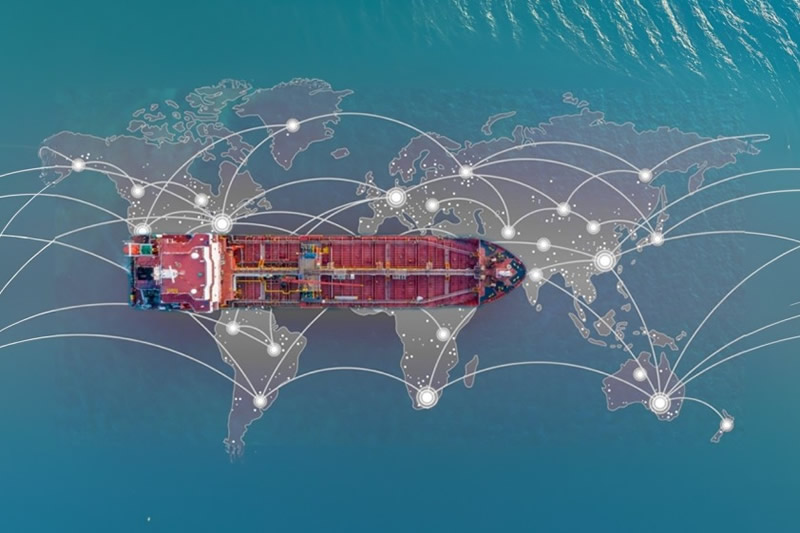A Four-Way Approach to Decarbonising Shipping
12
Decarbonising the shipping industry is critical for achieving global emissions targets. The industry currently employs four main strategies: legislation and government controls, transitioning to low-emission fuels, enhancing energy efficiency, technological advancements in engine monitoring and boosting energy efficiency in shipping. These complementary approaches can significantly reduce greenhouse gas (GHG) emissions and are pivotal for achieving net-zero goals.

Legislation and Government Controls
International shipping plays a vital role in the global economy, facilitating about 80% of international trade. Recognising its environmental impact, regulatory measures are being expanded. For instance, the European Union has incorporated international shipping into its Emissions Trading System (EU ETS), while the International Maritime Organization (IMO) is advancing a GHG pricing mechanism for the sector. These efforts increase the likelihood of international shipping being subject to multiple pricing instruments.
Governments are leveraging various legislative tools, such as emissions trading systems, to establish compliance frameworks. Examples include New Zealand’s NZ ETS and California’s Cap-and-Trade Program. Emissions trading, a flexible regulatory approach, enables markets and organisations to determine the most efficient means of achieving policy targets. This contrasts with traditional command-and-control regulations, like best available technology (BAT) standards and subsidies.
Transitioning to Low-Emission Fuels
Enhancing energy efficiency alone cannot fully eliminate emissions, making the transition to low-emission fuels indispensable for reaching net-zero goals. Promising alternatives include biodiesel, which can be used in existing diesel engines with minimal modification, and biomethane, a renewable fuel compatible with LNG engines. However, these solutions face challenges such as limited sustainable biomass availability and high production costs. While drop-in fuels are easier to implement, they often face competition from other sectors, like aviation, which may drive up costs.
Technological Advancements In Engine Monitoring
Technological innovation in monitoring systems, engine management, and waste management could further support decarbonisation efforts in shipping. diesel engines, a longstanding choice for marine propulsion due to their reliability and efficiency, have benefited from continuous improvements in engine management systems and exhaust control technologies. The industry’s growing emphasis on environmental responsibility is driving the adoption of advanced systems to meet high performance and reliability standards.
Regulations, such as IMO MARPOL Annex VI, focus on limiting air pollution from ships and extend to mobile offshore drilling units and oil industry platforms. These advancements not only enhance compliance but also support the industry’s broader sustainability goals.
Boosting Energy Efficiency in Shipping
Operational measures like 'slow steaming', reducing ship speeds, offer a straightforward way to improve energy efficiency. This approach reduces fuel consumption without requiring vessel modifications. However, slow steaming can also increase operational costs, as maintaining shipping capacity may require deploying additional vessels. This poses challenges for industries reliant on just-in-time delivery systems, where timeliness is critical.
Conclusion
The path to decarbonising shipping involves a multifaceted approach encompassing regulatory measures, fuel transitions, technological advancements, and operational improvements. By combining these strategies, the shipping industry can play a pivotal role in global efforts to mitigate climate change and achieve sustainable economic growth.
#Protea #Emissions #Monitoring #CEMS #FTIR #Gas #Analysers #Shipping #Marine #Carbon #Capture
Other Articles
Global Underground CO2 Storage Data Offers Hope Amid Rising Emissions
01
IMO Postpones Adoption Of Global Net-Zero Shipping Framework
04
Pioneering Carbon Capture Projects Ready For Construction
03
Methanol & Ammonia Deemed Ready As Zero-Emission Shipping Fuels
01
Carbon Capture Storage Reaching A Turning Point In Decarbonisation
13
CCS To Capture 15% Of Shipboard Carbon Emissions By 2050
29
Global Shipping Industry Struggles To Navigate Net Zero Transition
21
Carbon Capture Surges as Economics Policy & Industry Demand Align
14
GHG Emissions At Ports On The Rise Despite Initiatives
07
Carbon Capture Utilisation & Storage In A Nutshell
30